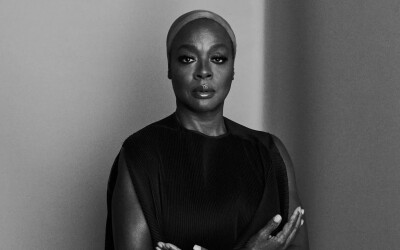India’s ‘Malalas’: The Teenage Girls Leading the Fight for Gender Equality
A shriek rings out from the classroom at the end of the corridor, followed by a chorus of high-pitched voices clamoring to make themselves heard. Amid the chaos sits a beaming Sharadindu Goswami. A year ago, the 36-year-old teacher explains, the girls would “barely speak a word.” He gestures proudly around the group. “Now we can’t get them to stop.”
Perhaps an unusual reaction to a class full of teenagers, but then, these are no ordinary schoolgirls. Already passionate and outspoken advocates for gender equality, the girls were selected as potential future change-makers by the Milaan Foundation, a nongovernmental organization working to empower teens in rural India to champion women’s rights in their communities. “It’s really about finding girls who have that fire within them, that ability to make change happen, and then teaching them how to use that,” explains Goswami, who co-founded the NGO in 2007.
Here, around 70 girls from Uttar Pradesh, one of the poorest states in India, are attending a training session on gender equality designed to help them become young community leaders known as Girl Icons. The NGO’s leaders call them the “new Malalas,” a reference to Pakistani activist Malala Yousafzai, who in 2014 became the youngest recipient of the Nobel Peace Prize. Simpi Soni, from the nearby village of Daulatpur, is one of the Icons. She joined the two-year program after witnessing her 15-year-old neighbor drop out of school, marry and then die during childbirth. Furious that girls weren’t being taught the dangers of teenage pregnancy, Soni became a vocal opponent of child marriage in her community.
Fourteen-year-old Priya Rajput, who is also here for the training, is known for preventing child marriages in her village of Jaliya Mau and works to persuade the parents of girls who have dropped out of school to send them back to class. She, like many other girls, experienced initial opposition for her involvement as a Girl Icon, including from her parents and her teacher. But determination kept her going and the community has, for the most part, been very supportive.
Across India, the secondary school dropout rate is much higher for girls, and there is a strong correlation between school dropouts and child marriage. Each additional year of school could reduce child marriage by up to 5 percent, according to a 2017 World Bank estimate. Goswami believes that equipping the girls with knowledge about gender constructs and training them to speak for themselves will help them become community leaders and inspire others to rethink the gender narrative.
After the training session, the Girl Icons return home and form peer groups of about 20 girls with whom they will pass along the knowledge and confidence they’ve gained. It ripples out into the community. “It’s about creating a movement,” Goswami explains. In some villages, the results of this movement are already evident. When Khushboo, who was selected as a Girl Icon in 2015, witnessed her classmates dropping out of school, she started running street plays with her peer group to educate the community on child marriage and girls’ education. Soon the whole community rallied around them.
Source: ozy.com


